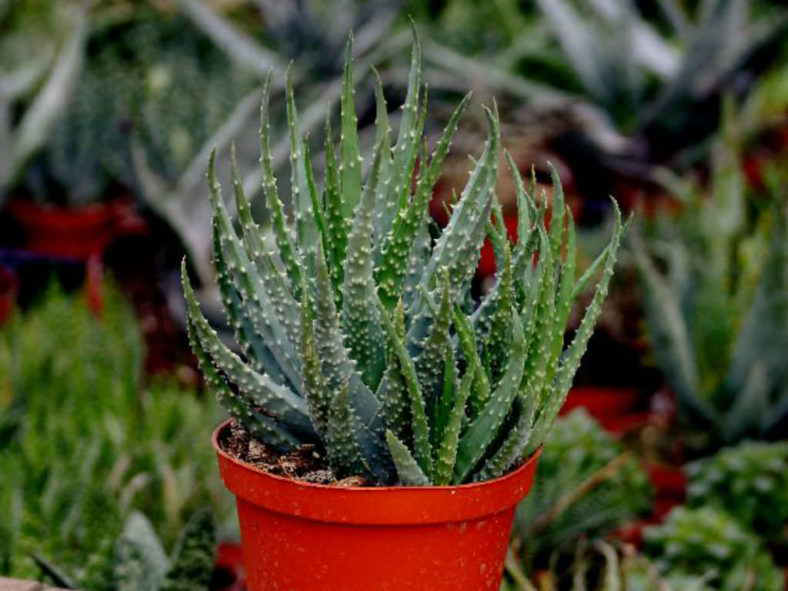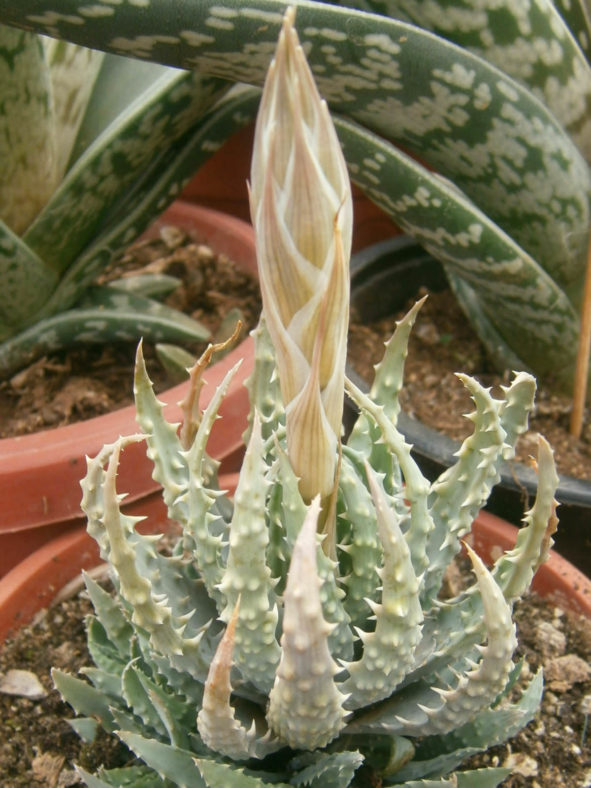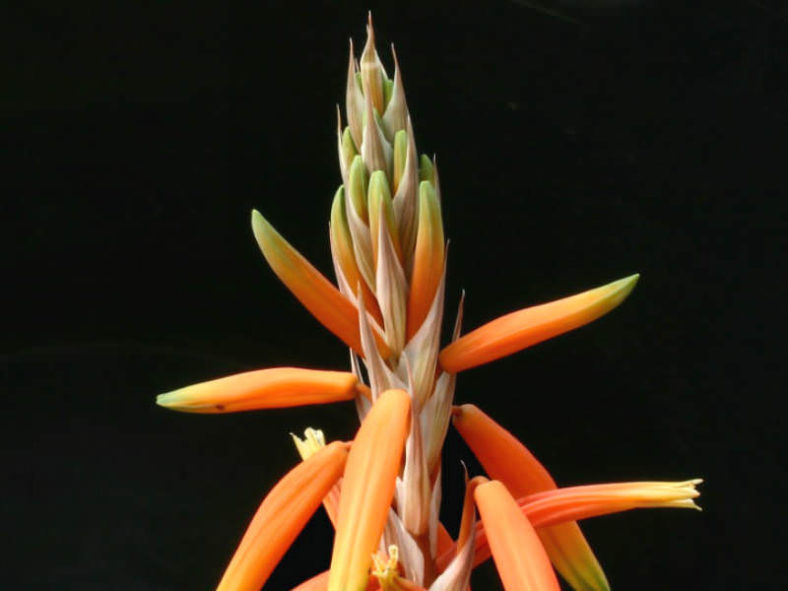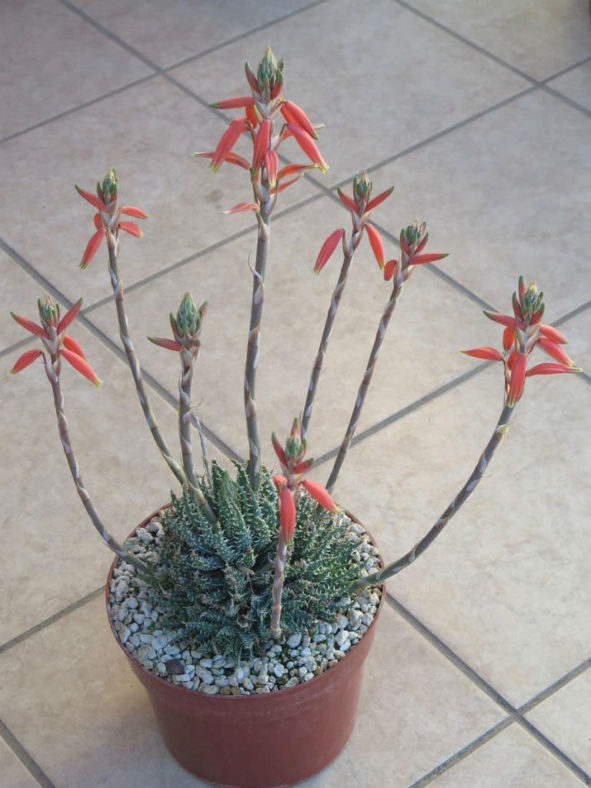Scientific Name
Aloe humilis (L.) Mill.
Common Name(s)
Blue Dwarf Aloe, Crocodile Jaws, Crocodile Jaws Aloe, Dwarf Hedgehog Aloe, Hedgehog Aloe, Spider Aloe
Synonym(s)
Aloe perfoliata var. humilis, Catevala humilis
Scientific Classification
Family: Asphodelaceae
Subfamily: Asphodeloideae
Genus: Aloe
Etymology
The specific epithet "humilis" (pronounced "HEW-mil-is") means "low, small, slight" and refers to the growing habit of the species.
Origin
Aloe humilis is native to South Africa (Eastern Cape, Northern Cape, and Western Cape).
Description
Aloe humilis is a small succulent that forms dense clusters of stemless or short-stemmed rosettes of pale blue-green leaves with irregular bumps and soft spines along the margins. It is a very variable species in leaf size and shape, and in the size, shape, and number of bumps and marginal spines. The rosettes can reach a diameter of 8 inches (20 cm). The leaves are triangular, erect or incurved, measuring up to 4.8 inches (12 cm) in length and 0.7 inches (1.8 cm) in width.
From late winter to spring, Aloe humilis produces spikes of red to orange, pendulous flowers atop stalks that can grow up to 14 inches (35 cm) tall. The tubular flowers can reach up to 2 inches (5 cm) in length.

Hybrids of Aloe humilis
How to Grow and Care for Aloe humilis
Light: When growing Aloes indoors, place your plants in a southern or southwest-facing window with plenty of bright, indirect light. Outdoors provide light shade, especially during the hottest parts of the day.
Soil: Plant Aloes in well-drained soil specially formulated for cacti and other succulents, or make your own soil mix. Drainage is essential because too much moisture around roots can cause root rot.
Hardiness: Aloe humilis can withstand temperatures as low as 25°F to 50°F (-3.9°C to 10°C) and is hardy in USDA hardiness zones 9b to 11b.
Watering: These succulents need regular watering but are very tolerant of short periods of drought. Water deeply, but only when the soil is dry. Cut back on watering during the winter months.
Fertilizing: Aloes generally do not require fertilizer, but may benefit from the extra nutrients.
Repotting: These plants are not particularly fast-growing and will only rarely need repotting. Repot them in the spring in a container a few inches larger in diameter every few years to prevent rootbound roots.
Propagation: Propagating Aloe can be done by using the offsets, cuttings, or seeds from a mature plant.
Learn more at How to Grow and Care for Aloe.
Toxicity of Aloe humilis
Aloe humilis is generally considered nontoxic, but ingestion may cause symptoms such as stomach upset, cramps, and diarrhea in both humans and pets.
Links
- Back to genus Aloe
- Succupedia: Browse succulents by Scientific Name, Common Name, Genus, Family, USDA Hardiness Zone, Origin, or cacti by Genus
Photo Gallery
Click on a photo to see a larger version.


